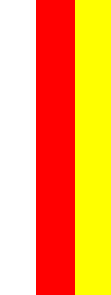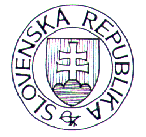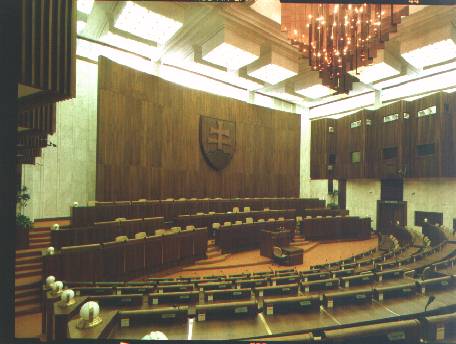 STARA
LUBOVNA
STARA
LUBOVNA
 STARA
LUBOVNA
STARA
LUBOVNA

Stop for a while, wayfarer
Stop for a while, wayfarer, who wants to step in our town. Wait
a moment.
You are welcomed by the town, which managed to get from a small village
to the prime of fame. It was visited by many kings of Hungary and Poland,
international agreements were undersigned here, artists, scholars and
merchants from various parts of Europe met here. Years of success and ill
alternated, but the town constantly, as a lengedary bird Phoenix, as arose
from ash, to grow in a new beauty.
Come wayfarer. We put the town in hand to you, with its rich history and
present times. So cross treshold of its gates...so enter.
One of the oldest towns in Spis region - Stara Lubovna. It lies on both banks of the Poprad river in a picturesque valley of Lubovnianska mountain range, east of High Tatras. Panoramatic view of the town is emphasized by the impressive Lubovna Castle.
Some of important dates in the town's history
1292 - First written record about town is known in connection with the construction of Podolinec fortification mentioned as LIBENOW
1301 - Czech and Polish King Vaclav presented the village to the Gorgey family
1315 - Village was mentioned under the name LUBLOW. It was granted emfyteutic right (a kind of hereditary lease of land)
1364 - Granted the right to hold annual fairs. King Ludovit I. granted Lubovna town's privileges on the basis of the Magdeburgh Law.
On October 13, 1364 the town was granted the market right until then granted only to Buda (Budapest, capital of Hungary) and Kosice.
1412 - Thirteen Spis towns, under the Spis law, on the basis of the privilege granted in 1271, and three free royal towns – Stara Lubovna, Hniezdne and Podolinec, were given to the Polish deposit for 37000 sixties of Czech groshen, where the town remained for 360 years.
1414 - Liberation of the town inhabitants from the half of the Krakow tariff
1499 - Confirmation of the burghers right to be tried only by their mayor and the town council
1508 - 1526 Liberation of the burghers from toll and payments in all of Hungary
April 11, 1556 Town devasted by great fire disaster after which there remained only 5 houses
1772 - Annexation of the whole deposited territory including Stara Lubovna back to Hungary after 360 years
January 25, 1945 Liberation of the town from nacists (World War II)
1968 - Re-established district of Stara Lubovna
1992 - celebration of
700 years from first written record about Stara Lubovna
Ad revidendum
So this is my town, which rose again and finding out its past, it builts up
its present and plans the new future so it would correspond with the spirit
and demands of the period.
Come, wayfarer, again to our town. Come in every season, the town will
welcome you each time with another magic, once with a meadow flourished,
another time clad in snow-white.
You are leaving, remember. If you saw something wrong here, forgive, please.
If something beautiful, store it in your heart, if it is necessary to praise
something, tell about it to others. Come again, to see you later!
Area: 49,036 square kilometers or 18,928 square miles (comparative area: about the size of West Virginia)
Climate: temperate; cool summers and cold winters
Terrain: rugged mountains in the central and northern parts, lowlands in the south
Population: 5,356,207 (as of December 31, 1994), density 109 persons/square kilometer
Capital: Bratislava (451,616 persons as of June 30, 1995)
Other important cities: Kosice (239,927), Presov (92,013), Banska Bystrica (88,390), Nitra (87,127), Zilina (86,373), Trnava (73,012), Trencin (57, 928)
Ethnic composition: Slovaks (85.7%), Hungarians (10.6%), Romanies /Gypsies/ (1.4%), Czechs (1.0%), Carpatho-Rusyns /Ruthenians/ (0.3%), Ukrainians (0.3%), Germans (0.1%), Poles (0.1%), Jews (the Jewish community in Slovakia has about 8,000 people)
Religion: Roman Catholic (60.4%), Atheist (9.7%), Protestant(8.4%), Greek Catholic (3.4%), Orthodox (0.7%), other 17.5%
 National emblem: consists of an early Gothic shield with a
silver double cross erected on the central and highest of the three blue hills
National emblem: consists of an early Gothic shield with a
silver double cross erected on the central and highest of the three blue hills
 National flag: has three horizontal stripes:
white, blue and red. The state emblem of the Slovak Republic appears in the upper left of
the flag
National flag: has three horizontal stripes:
white, blue and red. The state emblem of the Slovak Republic appears in the upper left of
the flag
National anthem: is composed of the first two stanzas of the hymn "Nad Tatrou sa blyska" (Thunder above the Tatra Mountains)
Official Language: Slovak (a member of the Slavic language group, that includes Czech, Polish, Bulgarian, Serbian, Croatian, Ukrainian, Russian, etc.). Slovak is written in Roman characters.
 National seal: has the national
emblem of the Slovak Republic surrounded by the inscription Slovenska republika (The
Slovak Republic)
National seal: has the national
emblem of the Slovak Republic surrounded by the inscription Slovenska republika (The
Slovak Republic)
The Slovak Republic came into existence on January 1, 1993 as one of the successor states of the Czech and Slovak Federal Republic. The Slovak Republic is a parliamentary democracy with autonomous legislative, executive and judicial branches. The Constitution guarantees every citizen equality before the law without regard to gender, religion, race, national origin, social status or political conviction. State bodies can act only on the basis of the Constitution, within its limits, and to the extent and in the manner defined by law. International treaties on human rights and other basic agreements that were ratified by the Slovak Republic, and promulgated in a manner determined by law, take precedence over the Slovak Republic own laws, provided that they secure greater constitutional rights and liberties.
The National Council of the Slovak Republic is a unicameral parliament, and under the Constitution is the supreme body exercising legislative power in the Slovak Republic. The National Council has 150 members elected for 4 year terms in direct elections with secret ballots. At least 5% of the total vote is needed for a party to enter the Parliament (7% for a coalition of 2-3, 10% for a coalition of 4 and more parties). The system of elections is proportional representation - parties are alloted seats in Parliament in accordance with the percentage of votes they get in the parliamentary elections.
 |
The Chairman of the National Council of the Slovak Republic is elected or recalled by secret ballot with the consent of an absolute majority of all members of the Parliament. The Chairman is responsible exclusively to the National Council of the Slovak Republic.
The President of the Slovak republic is the Head-of-State. The President is elected to office, and may be removed from office, by the Parliament by a three-fifths majority of all its members. The same person can be elected President for a maximum of two consecutive 5 year electoral terms. The President of the Slovak Republic has limited powers. First President of the Slovak Republic since February 1993 has been Michal Kovac.
The Government of the Slovak Republic is the supreme body for exercising executive power. It consists of the Prime Minister, Deputy Prime Ministers and Ministers. The Government is formed on the basis of Parliamentary elections. The Prime Minister is appointed and removed by the President of the Slovak Republic. Upon the advice of the Prime Minister, the President appoints and removes other members of the Government and grants commissions to carry out departmental duties. The Government is collectively responsible to the Parliament for the exercise of governmental powers, which may take a vote of no-confidence at any time.
The Constitutional Court of the Slovak Republic is an independent judicial body charged
with protecting constitutionality in the Slovak Republic. The Court consists of 10 judges
appointed by the President for a period of 7 years out of 20 nominees proposed to him by
the Parliament. The Court is headed by a President, who is appointed from among the judges
of the Constitutional court by the President of the Slovak Republic. The President of the
Constitutional Court is currently Milan Cic.
The territory of the Slovak Republic is divided into administrative territorial units - 8 regions and 79 districts.
Municipalities (towns, villages, etc.) make independent decisions on issues connected with their own administration and municipal properties. Municipal councils and municipal mayors are elected.